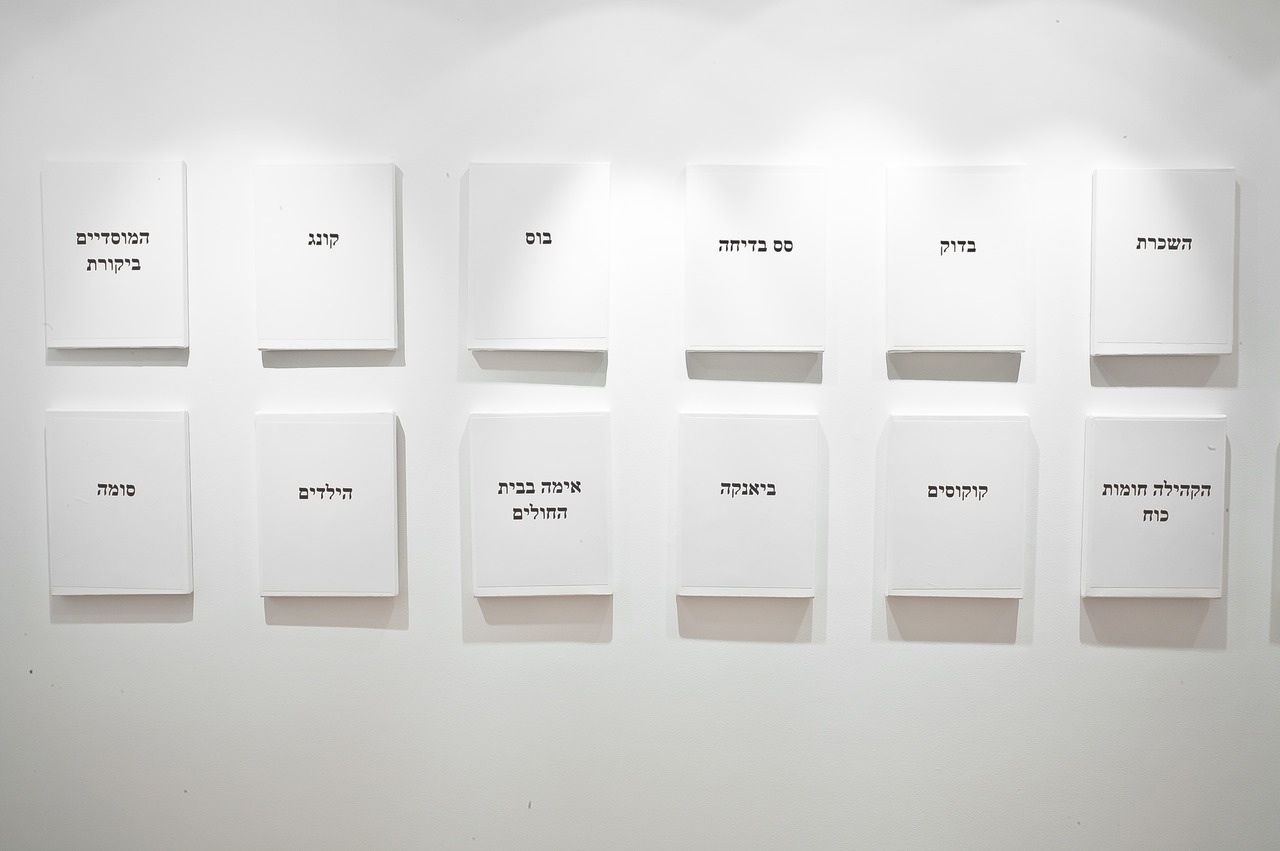Translating Asher Penn

“The show is photographic,” says New York-based artist Asher Penn, referring, improbably, to his current show of “Hebrew Paintings.” They’re not photos, however; they’re 100 small white canvases with fragments of black Herbaic text placed in the center, printed off a computer and fixed to the surface with brushstrokes of acrylic medium. The text originated as a poetic list of names, titles and phrases, all of which have a strong cultural and personal meaning for Penn. He collected disparate, often absurd phrases, such as “I am a dog”, “Arrested Development,” and “Institutional Critique.” Penn says he learned to read Hebrew phonetically in his youth, but he’s still unable to write it himself: to create the “Hebrew Paintings” text, he logged on to the Google Translate application.
“I’m interested in the pull between the automatic processes of photography, and the human aspects that go into taking a picture. I like to capture objects in an indexical fashion, but without depicting them as removed from their environment,” explains the artist, about his tendency to photograph everyday objects and subject matter. “In this body of work, I established these phrases as objects, by sorting and producing them via an automatic process. The difference between the words before and after it is translated reminds me of the shift that occurs with an subject before and after it is photographed.”
“They are Epson Inkjet prints adhered to the canvas with matte medium, so they sit incorrectly on the canvas. This created these nice moments… each time I would make one, it would be different and there was this possibility for variation,” Penn explains. “With photography, it feels like you’re working in the opposite direction to painting: the infinite variations are already out there. Your job is to frame them.”
This process becomes a simple experiment that gives Penn some aesthetic distance from the work and the ability to see what sort of cultural connotations are skewed through the translation process. Andrew Roth’s small gallery is also serves as home for his publishing house and often shows artist and photographers who work in the book format. For Penn, who is a prolific book artist, adapting gallery work to the page is a natural process. The repetition of imagery and scale in the show functions the same way in the small book that he self-published for the show.
To a viewer unfamiliar with Hebrew, the characters are entirely abstract, without any visual cues. A small translation card available at the gallery desk lists the words pictured in the exhibition space, but without any indication of which is which. Penn describes, “you are seeing something and not knowing what it means. There is something very peaceful about that.”
ASHER PENN: HEBREW PAINTINGS IS ON VIEW AT ANDREW ROTH GALLERY THROUGH DECEMBER 17, 2010.






